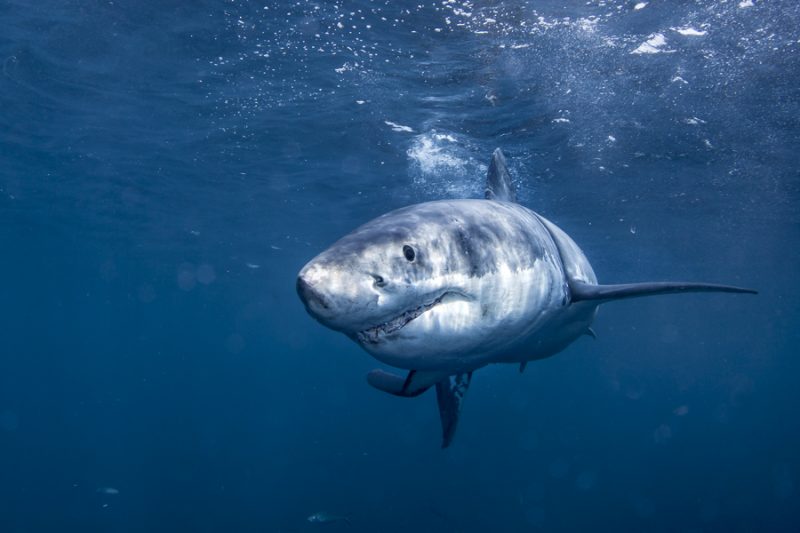The ovoviviparous animals are those that develop inside an egg before being born. But what distinguishes the ovoviviparous is that the egg remains inside the mother until the embryo is fully developed. This is why the animal comes out of the egg immediately after the egg is laid. It can even hatch inside the mother’s body and later give birth. For instance: white shark, anaconda, lucion.
It is important to distinguish ovoviviparous animals from other animals that also develop their embryos within eggs, the oviparous. The latter deposit their eggs in the external environment at the beginning of embryonic development. In other words, the embryos develop outside the mother’s body.
They should also be distinguished from viviparous animals, which are those whose embryo develops inside the mother’s body, like mammals. Although the viviparous also develop the embryo inside, the difference is that since it is covered by a shell, it cannot be fed directly by the mother.
That is to say:
- Common point between ovoviviparous and oviparous. The embryo is protected by a shell.
- Common point between ovoviviparous and viviparous. Fertilization occurs within the mother’s body, where the embryo also develops.
Examples of ovoviviparous animals

- White shark. A type of shark of great size and robustness. It has an arched mouth. He must swim constantly (he cannot remain still) in order to breathe and to float, since he does not have a swim bladder. The embryos feed through the yolk. This shark does not lay eggs, but the young hatch inside the mother and then are born developed.
- Boa constrictor. Reptile that can measure between 0.5 and 4 meters, depending on the subspecies. In addition, the females are larger than the males. It is reddish and white, or reddish and brown, with variants depending on the subspecies. It mates in the rainy season. Its gestation lasts several months. The hatching of the eggs occurs within the body of the mother, hatching already developed young.
- Honeydew. Type of small shark, which reaches just over a meter in length. It is characterized by having poisonous spines on the surface of the body. It is the most abundant species of shark but with a restricted distribution. The reproductive litter depends on the size of the female, since the usual is 1 to 20 embryos per gestation, but larger females can have more numerous litters. They are born out of the egg.
- Stingray (giant blanket). It is distinguished from other species because it does not have a poisonous stinger on its tail. Also because of its large size. Lives in temperate seas. It is capable of jumping out of the water. At the time of reproduction, several males court a female. In order for one of them to get to copulation, he must kill his competitors. It is estimated that the time that the eggs remain inside the female can be more than twelve months. They have one or two young per litter.
- Anaconda. A genus of constrictor snake. It can measure up to ten meters in length. Although it does not live in a group but in a solitary way, when the female wants to reproduce she can attract the male by releasing pheromones. In each litter between 20 and 40 young are born, approximately 60 cm long.
- Suriname toad. Amphibian that inhabits tropical and subtropical areas. It is characterized by its flattened body and its flat, triangular head. Its color is slightly green gray. It is a special type of ovoviviparous animal, since fertilization occurs outside the mother’s body. Once fertilized, the female re-encloses the eggs in her body. Unlike other amphibians, which are born as larvae and then undergo metamorphosis, this toad carries out its larval development inside the egg, and the individuals that are born already have their final shape.
- Platypus. It is considered a mammal, but it lays eggs, so it can also be classified as ovoviviparous. It is a semi-aquatic animal that lives in eastern Australia and in Tasmania. It is characterized by its particular appearance, with a snout that resembles a duck’s beak, a beaver-like tail, and otter-like legs. It is poisonous.
- Jackson Trioceros. Species of ovoviviparous chameleon. It has three horns, which is why it is called “trioceros”. Lives in East Africa. The young are born in litters of between 8 and 30 copies, with a gestation of up to six months.
- Hippocampus (Seahorse). It is a particular type of ovoviviparous, since the eggs do not mature inside the body of the female but in the body of the male. Fertilization occurs while the female passes the eggs into the male’s sac. The sac is similar to that of the marsupials, that is, it is external and ventral.
- Lution (Crystal shingles). Very particular animal, since it is a legless lizard. That is to say that in appearance it is similar to a snake. However, it is known that it is a lizard because there are vestiges of its skeleton in its body that has the characteristics of lizards. Also, it has movable eyelids, unlike snakes. It is a reptile that lives in Europe and can measure up to 40 cm, or 50 cm in females. Reproduction occurs in spring. After 3 or 5 months of gestation, the female lays the eggs with the mature young inside, and hatching occurs immediately.
